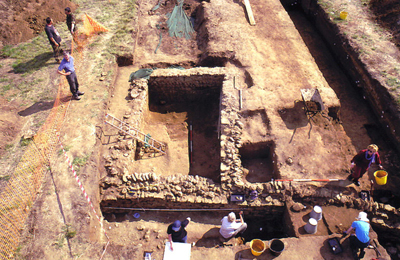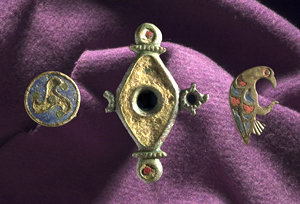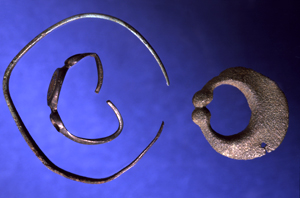A new phase for the Marcham Community Archaeology Project
The project has been awarded Heritage Lottery Funding which will allow volunteers from Marcham and the surrounding villages to carry out post-excavation analysis of material and records for the next three years, providing an opportunity to take part in a major research project, to experience what happens when an excavation finishes, and how it results in publication.
In addition to local community volunteers it is hoped that a small number of Continuing Education archaeology students will be able to participate in these activities.
 For 11 years from 2001 many Continuing Education students and members of the local community took part in the excavations at Marcham under the directorship of Professors Gary Lock and Chris Gosden. The site is of national importance because of its evidence for exceptional Iron Age and Romano-British activity and also for its wealth of well-preserved archaeology.
For 11 years from 2001 many Continuing Education students and members of the local community took part in the excavations at Marcham under the directorship of Professors Gary Lock and Chris Gosden. The site is of national importance because of its evidence for exceptional Iron Age and Romano-British activity and also for its wealth of well-preserved archaeology.
The evidence from Marcham shows that centuries before the Roman Conquest, Marcham was already the site of a substantial Iron Age complex, this was both a settlement and a ritual centre with a series of large banked and ditched enclosures and possible shrines. The Iron Age evidence is extensive with a collection of pottery of national importance as well as many thousands of animal bones.
 The stratigraphy within the many pits and ditches is complex and will need to be analysed in detail. Following that, in the Romano-British period, the site developed into a major temple site with an extraordinary semi-amphitheatre which is unique in Roman Britain. The field name 'Trendles', meaning wheel, circle or ring, most probably derives from this structure. As a temple site, the devotees dedicated all manner of things to their chosen gods for hundreds of years, and the amount of finds recovered during excavation is almost overwhelming.
The stratigraphy within the many pits and ditches is complex and will need to be analysed in detail. Following that, in the Romano-British period, the site developed into a major temple site with an extraordinary semi-amphitheatre which is unique in Roman Britain. The field name 'Trendles', meaning wheel, circle or ring, most probably derives from this structure. As a temple site, the devotees dedicated all manner of things to their chosen gods for hundreds of years, and the amount of finds recovered during excavation is almost overwhelming.
Volunteers on this project will participate in a crucial stage of the post-excavation process. This will include pottery identification, the analysis of animal bone, and the interpretation of original site records including context sheets, section and plan drawings.
This is an excellent opportunity for anyone interested in archaeology to see and be involved in what happens after an excavation and how it leads to the publication of a report. Specialist training by Project Officers and finds specialists will be provided throughout all stages of the work. All individual contributions will be acknowledged in the final publication.
 The Project will be based at Manor Farm, Marcham under the supervision of Sheila Raven and Dr. Paula Levick. In addition to the local community volunteers it is hoped that a small number of Continuing Education archaeology students will be able to participate in these activities. The project will require a regular commitment of one day a week and attendance at specialist training sessions. To register an interest, please contact Sheila and Paula at trendlesproject@gmail.com.
The Project will be based at Manor Farm, Marcham under the supervision of Sheila Raven and Dr. Paula Levick. In addition to the local community volunteers it is hoped that a small number of Continuing Education archaeology students will be able to participate in these activities. The project will require a regular commitment of one day a week and attendance at specialist training sessions. To register an interest, please contact Sheila and Paula at trendlesproject@gmail.com.
Published 15 October 2012
